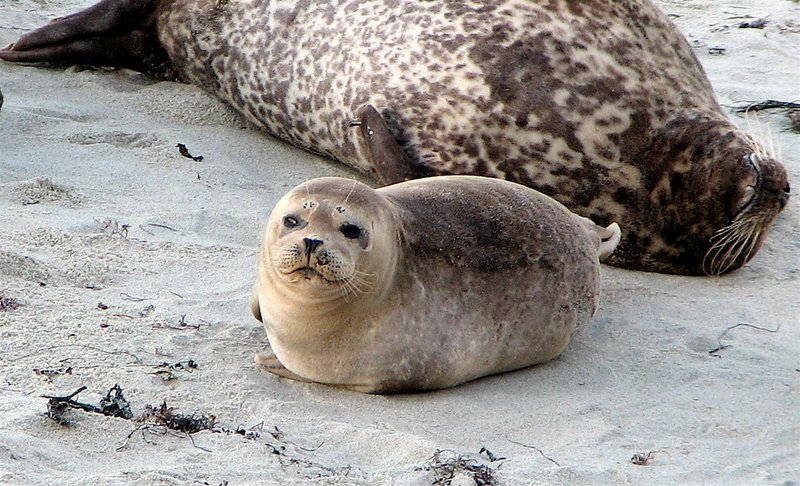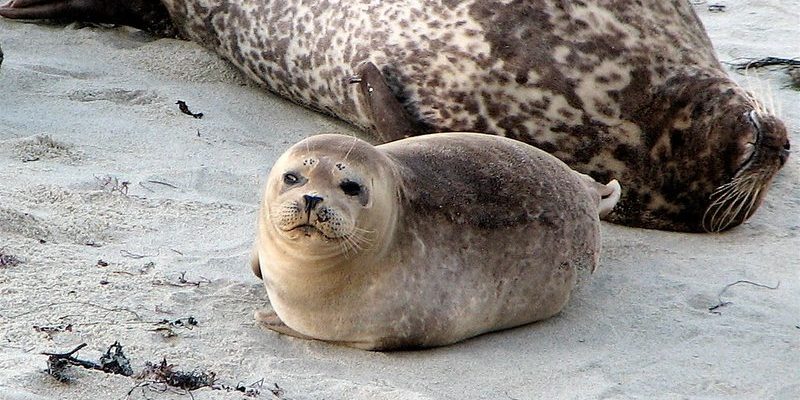
These clever animals live in coastal waters and are expert navigators. They can dive deep and swim long distances. But how do they do this? And what about their communication? Just like we have our own ways of expressing ourselves—through speech, gestures, and even text messages—harbor seals have their own system. So grab a warm drink, and let’s dive deeper into how these seals navigate their underwater world and chat with their buddies.
The Harbor Seal’s Habitat
Understanding how harbor seals navigate begins with knowing where they live. They thrive in coastal regions, often found in bays, estuaries, and along rocky shorelines. Their preferred habitats feature a mix of water and land, which offers them spots to rest and breed. This combination of environments is like a buffet for seals—it gives them access to food while providing shelter.
You might be wondering what they eat. Well, harbor seals are opportunistic feeders, munching on a variety of fish, squid, and crustaceans. This diverse diet influences their movement patterns. To navigate effectively, they have to know where their next meal is hiding, which means being familiar with currents, tides, and seasonal changes in food availability.
They also rely on their ability to dive. Harbor seals can dive over 600 feet deep! That’s like jumping off a 60-story building. They dive efficiently, using their thick blubber as insulation in cold waters. This ability helps them explore diverse areas for food, but it also demands a deep understanding of the underwater landscape.
How Harbor Seals Use Their Senses
Harbor seals have a fantastic set of tools at their disposal for navigation. Their senses are finely tuned to help them thrive in their aquatic homes. For instance, their whiskers, called vibrissae, are key to their navigation. These sensitive whiskers can detect even the slightest movements in water, helping them find prey in murky surroundings.
But it’s not just their whiskers that help them navigate. Harbor seals also have excellent eyesight, both above and below water. Underwater, their vision adjusts to the darker environment, allowing them to spot fish and other creatures. This skill is crucial when they’re on the hunt, as they rely on sight to catch their meals.
And let’s not forget about their hearing! Harbor seals can hear a wide range of sounds. They use these sounds to communicate with each other and to listen for potential threats. This combination of sensory information creates a detailed picture of their surroundings, guiding them through their daily lives.
Communication Among Harbor Seals
Speaking of communication, harbor seals are quite chatty. Their sounds range from barks and grunts to more complex vocalizations, especially during the breeding season. Imagine a crowded concert where everyone is talking at once—that’s a bit like what it’s like for these seals! They use these sounds to establish territory, call to mates, or even keep their pups close.
During breeding season, vocalizations can be especially important. Males often engage in a kind of “singing” to attract females. This isn’t just any singing—it’s a unique sound that can travel well through water. If you’ve ever done a cannonball in a pool and noticed the ripples, think of how those sounds travel similarly in ocean waters.
Interestingly, these seals are also capable of non-verbal communication. When they’re on land, they often use body language—like posturing or diving behavior—to express themselves. This visual communication plays a key role in social interactions within colonies, helping seals establish relationships and hierarchies.
Navigating with Environmental Cues
Harbor seals don’t just rely on their senses; they also pay attention to their environment. They use natural landmarks, such as coastline features, to help them find their way. It’s a bit like how we might use a favorite coffee shop or park as a reference point when navigating through a city.
Tides and currents also play a major role in navigation. Harbor seals are adapted to understand how these elements change throughout the day. They often time their hunts to coincide with the best tides for finding food. Just like a surfer waiting for the perfect wave, these seals know when to move and when to sit tight.
Moreover, changes in water temperature and salinity can signal changes in food availability. Harbor seals are aware of these shifts and adjust their movements accordingly. For them, staying in tune with the environment is a survival strategy, enabling them to thrive even in changing conditions.
The Impact of Human Activity on Navigation and Communication
As harbor seals navigate their oceans, they face challenges posed by human activities. Boat traffic, pollution, and habitat destruction can disrupt their natural behaviors. Imagine trying to navigate a busy street where cars whiz by unpredictably; it’s a similar situation for these seals as they swim.
Noise pollution from boats and industrial activities can also interfere with their communication. Since harbor seals depend on sound to talk to each other, excessive noise can make it hard for them to hear those important calls. It’s like trying to hold a conversation in a loud, crowded room—frustrating and difficult!
Conservation efforts are crucial for protecting harbor seals and their habitats. By understanding the impact of human behavior, we can take steps to minimize our footprint. This includes implementing stricter regulations on boat traffic in breeding areas and cleaning up polluted environments. When we work together to protect these incredible animals, we not only help them survive but thrive in their natural homes.
Harbor seals are remarkable creatures with a unique way of navigating and communicating in their watery world. From their sensitive whiskers to their vocalizations, every aspect of their behavior is finely tuned to help them thrive. Understanding how they navigate and communicate gives us a glimpse into their lives, showing us just how intelligent and adaptable they are.
Protecting their environments and minimizing the impact of human activities is vital for their future. By appreciating these fascinating animals and the challenges they face, we can help ensure that they continue to swim through our oceans for generations to come. So, the next time you see a seal lounging on a rock, take a moment to think about the incredible journey it takes to live in harmony with its world!

